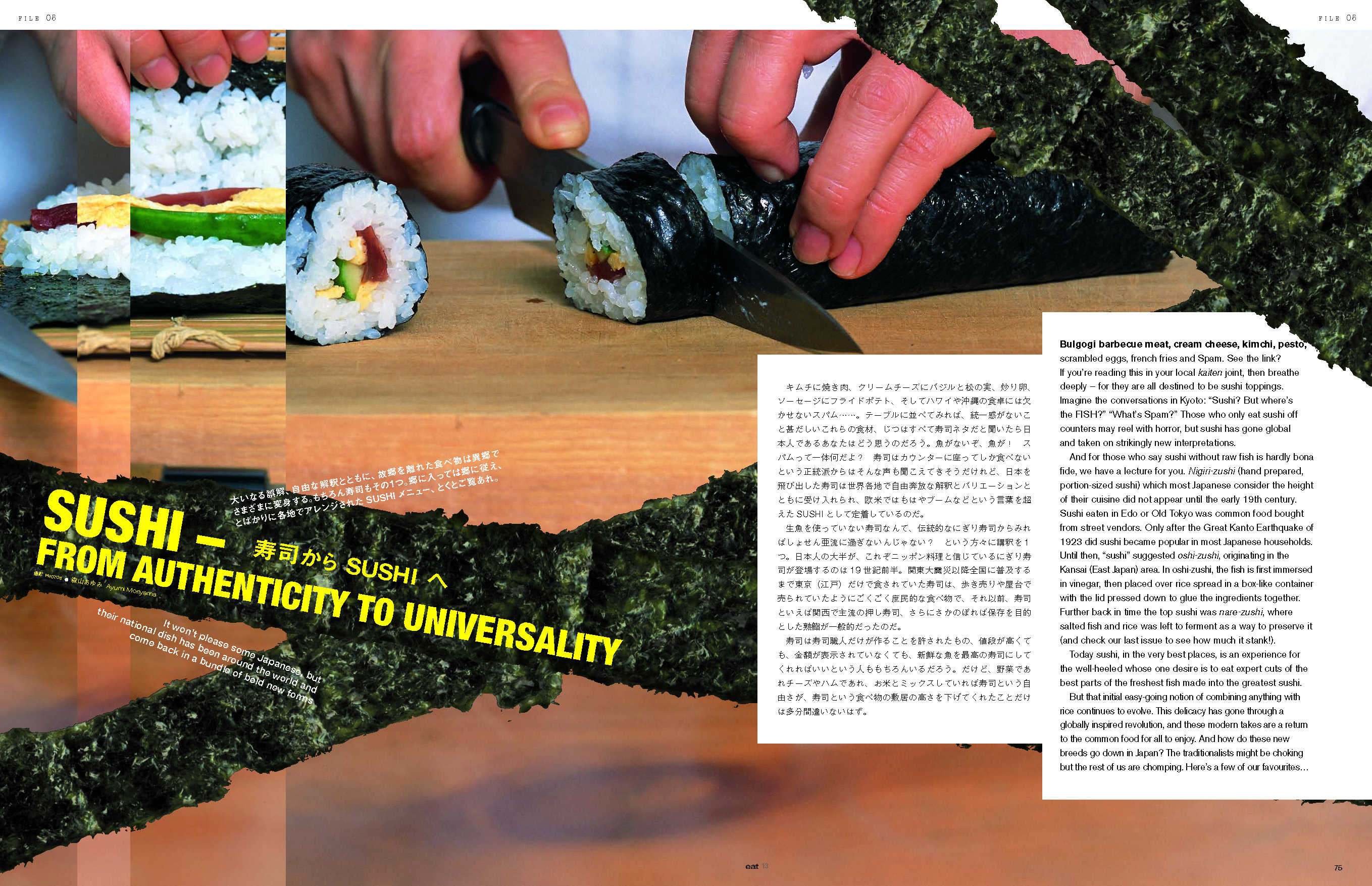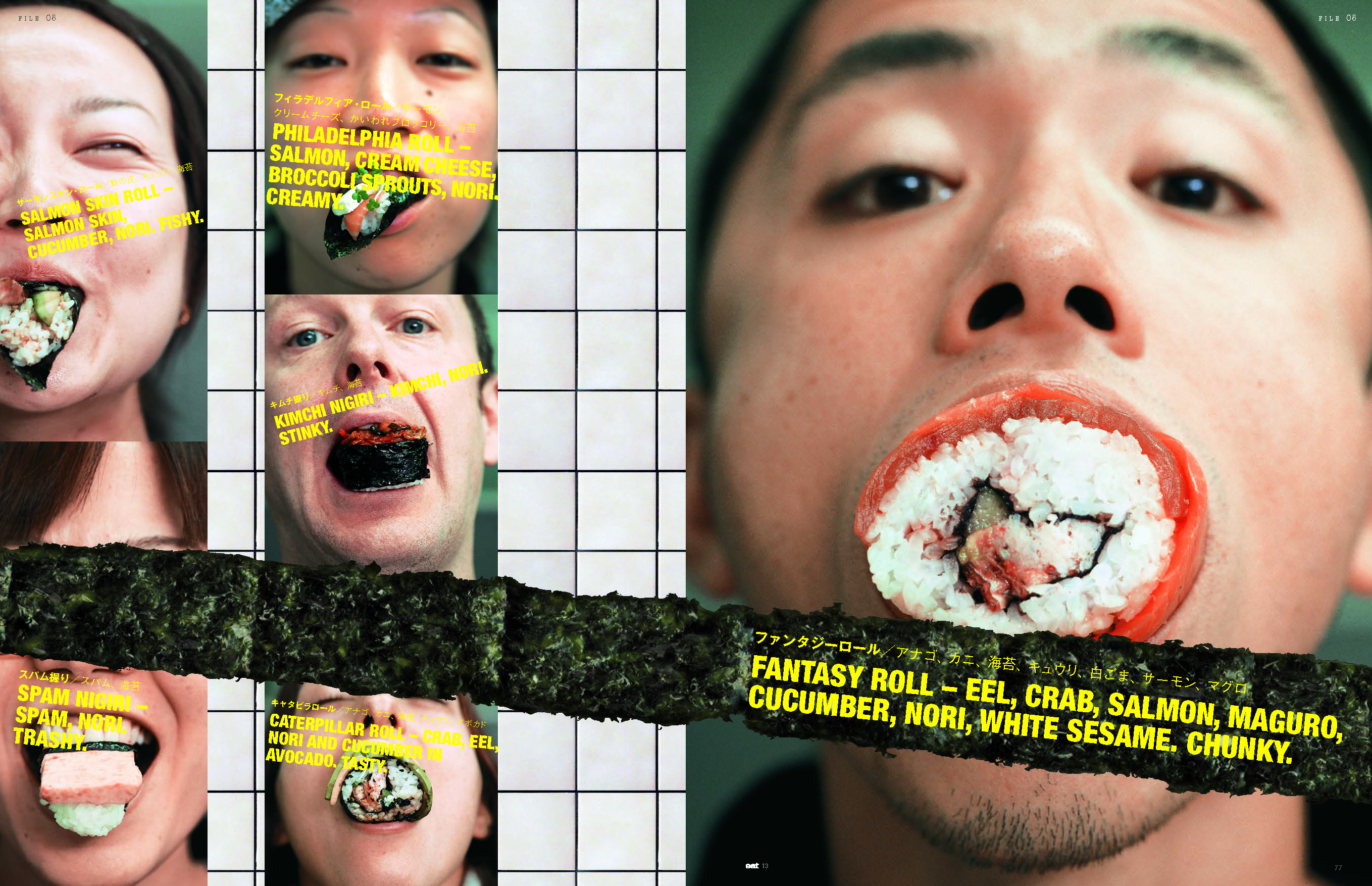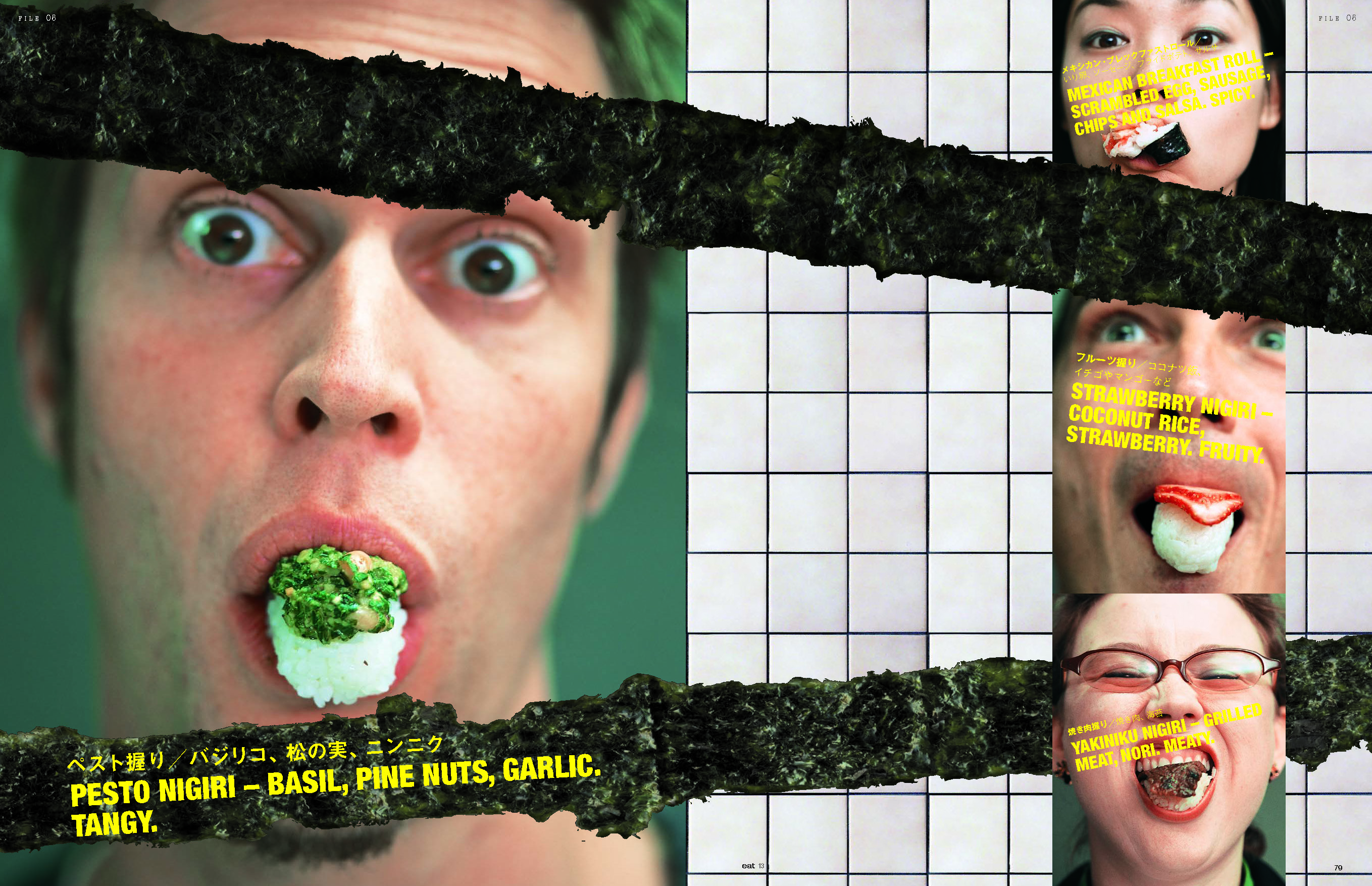SUSHI – FROM AUTHENTICITY TO UNIVERSALITY
Eat Issue 13: Exile
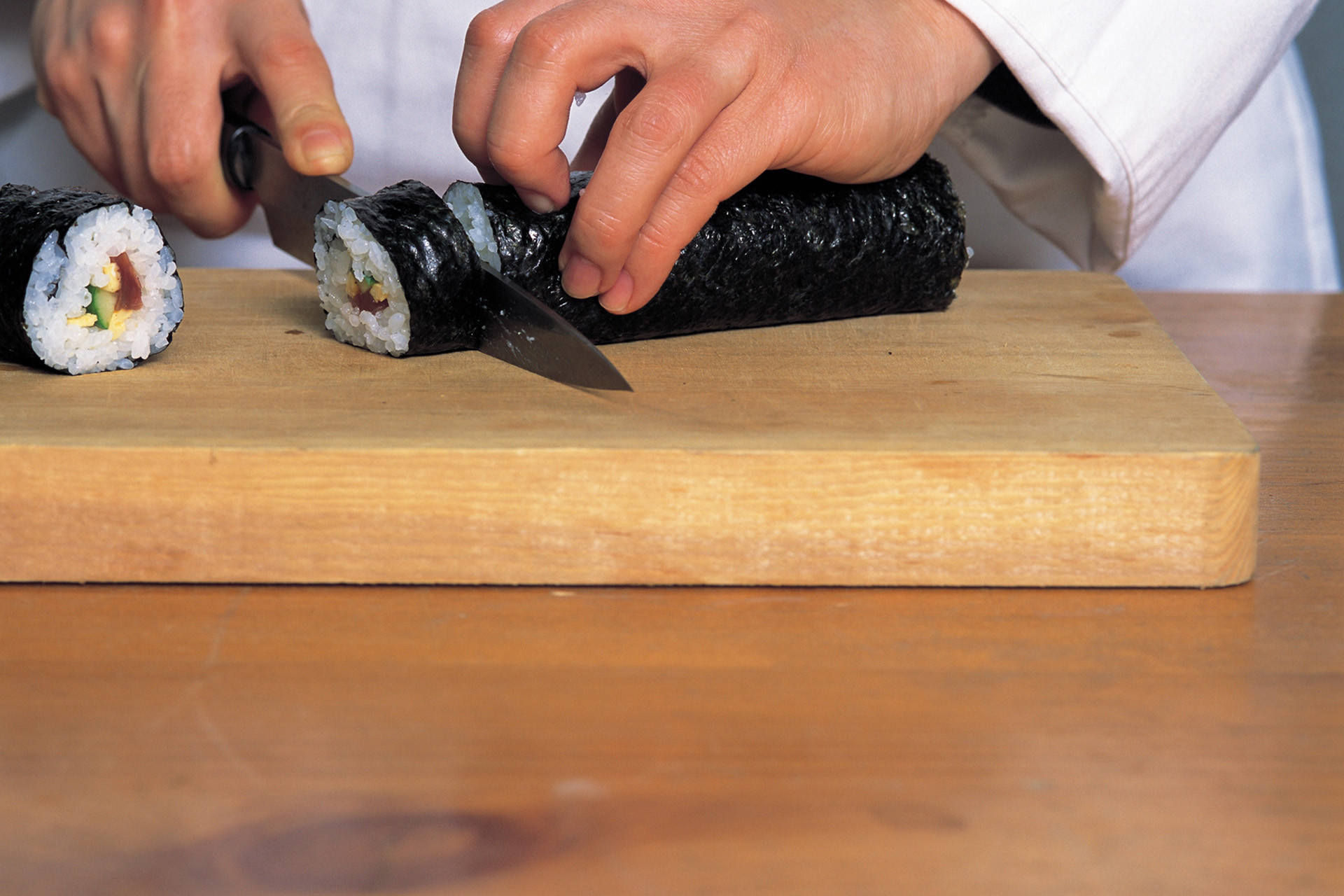
This article was originally published in February 2003.
It won’t please some Japanese, but their national dish has been around the world and come back in a bundle of bold new forms.
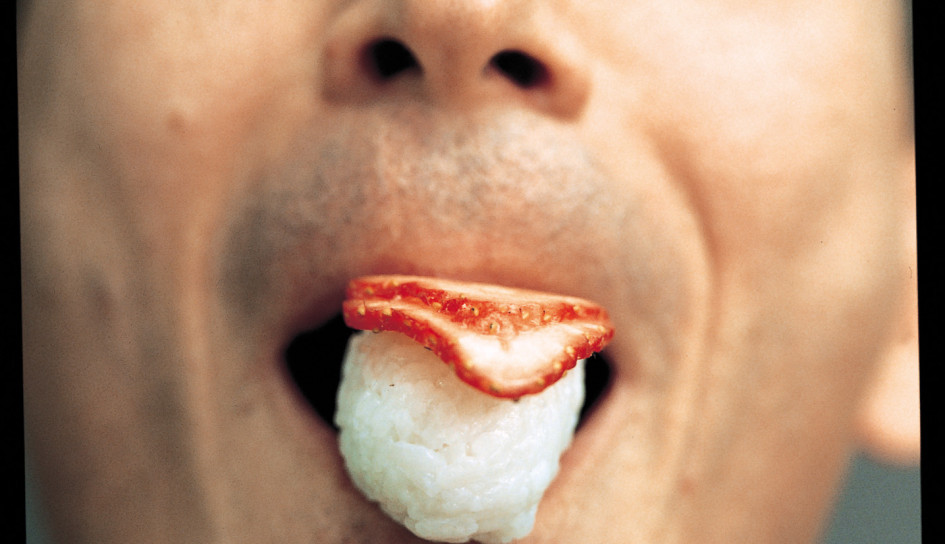
Strawberry nigiri – coconut rice, strawberry. Fruity.
Bulgogi barbecue meat, cream cheese, kimchi, pesto, scrambled eggs, french fries and Spam. See the link? If you’re reading this in your local kaiten joint, then breathe deeply – for they are all destined to be sushi toppings. Imagine the conversations in Kyoto: “Sushi? But where’s the FISH?” “What’s Spam?” Those who only eat sushi off counters may reel with horror, but sushi has gone global and taken on strikingly new interpretations.
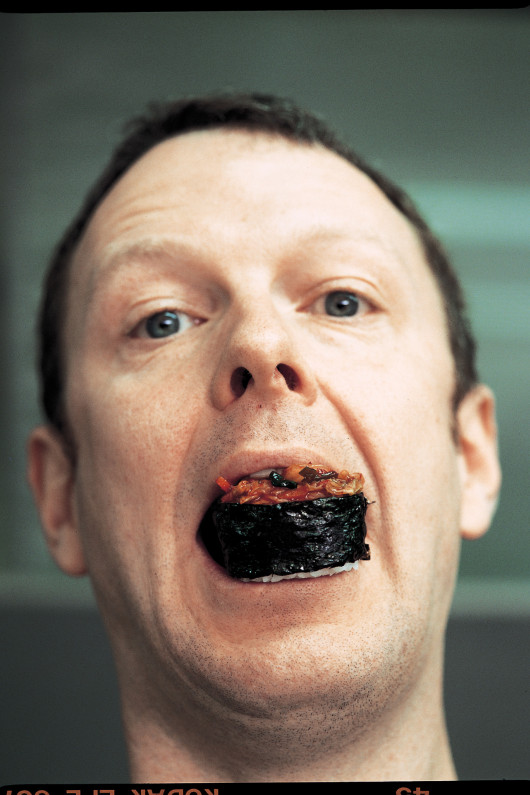
Kimchi nigiri – kimchi, nori. Stinky.
And for those who say sushi without raw fish is hardly bona fide, we have a lecture for you. Nigiri-zushi (hand prepared, portion-sized sushi) which most Japanese consider the height of their cuisine did not appear until the early 19th century. Sushi eaten in Edo or Old Tokyo was common food bought from street vendors. Only after the Great Kanto Earthquake of 1923 did sushi became popular in most Japanese households. Until then, “sushi” suggested oshi-zushi, originating in the Kansai (East Japan) area. In oshi-zushi, the fish is first immersed in vinegar, then placed over rice spread in a box-like container with the lid pressed down to glue the ingredients together. Further back in time the top sushi was nare-zushi, where salted fish and rice was left to ferment as a way to preserve it (and check our last issue to see how much it stank!).
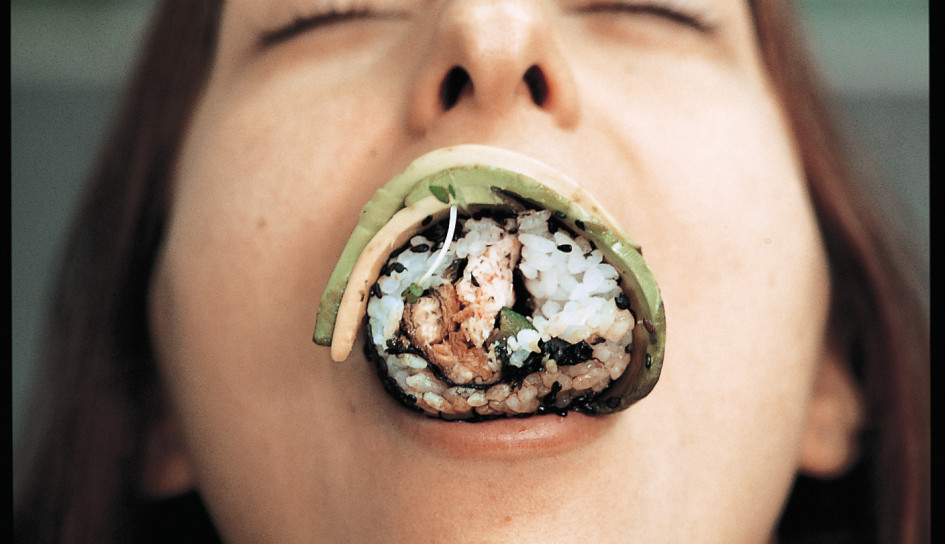
Caterpillar roll – crab, eel, nori and cucumber in avocado. Tasty.
Today sushi, in the very best places, is an experience for the well-heeled whose one desire is to eat expert cuts of the best parts of the freshest fish made into the greatest sushi.
But that initial easy-going notion of combining anything with rice continues to evolve. This delicacy has gone through a globally inspired revolution, and these modern takes are a return to the common food for all to enjoy. And how do these new breeds go down in Japan? The traditionalists might be choking but the rest of us are chomping. Here’s a few of our favourites…
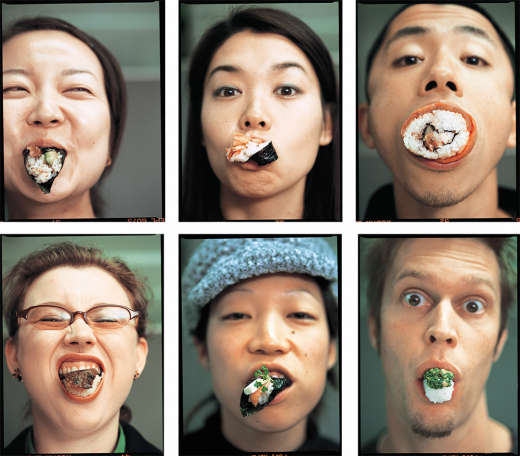
Left to right: Salmon skin roll – salmon skin, cucumber, nori. Fishy. Mexican breakfast roll – scrambled egg, sausage, chips and salsa. Spicy. Fantasy roll – eel, crab, salmon, maguro, cucumber, nori, white sesame. Chunky. Yakiniku nigiri – grilled meat, nori. Meaty. Philadelphia roll – salmon, cream cheese, broccoli sprouts, nori. Creamy. Pesto nigiri – basil, pine nuts, garlic. Tangy.
Text: Eat Team / Photo: Ayumi Moriyama
